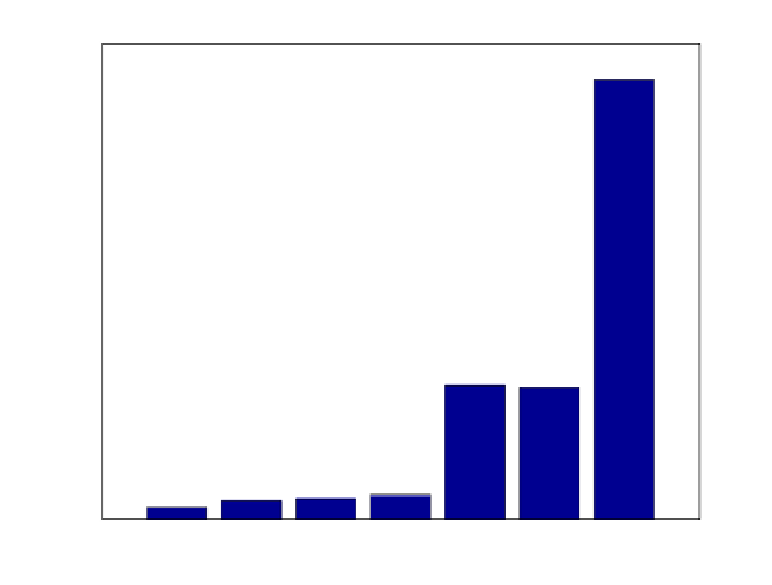Global Positioning System Reference
In-Depth Information
40
37.06
35
30
25
20
15
11.25
11.13
10
5
2.11
1.74
1.52
1.07
0
L2−CM
L2
E1b
E1
L5
E5a
E5
Signal (Signal Component)
Fig. 5. Ratio of the power estimate for new signals with respect to GPS L1 C/A
resource and power consumption of the Galileo E5a and E5b signals is close to that of the
GPS L5 correlator, as expected. As a result of a very high operating frequency the power
consumption of the wideband Galileo E5 correlator shoots up to almost 37 times that of the
GPS L1 C/A signal. The power consumption for the E5 signal can be reduced a little bit further
by focusing more on how the complex mixers are realised as discussed in Shivaramaiah (2011).
The ratio of the power consumption estimate with respect to the GPS L1 C/A is shown in
Fig.5. The power consumption was estimated using the PowerPlay Analyzer tool with real IF
signal samples provided as an input
1
to the baseband module.
5.2 Complexity comparison results for different baseband configurations
Fig. 6 shows the power consumption of different signals vs. the number of
channels. A “channel” comprises the core correlator, timing control, address and data
multiplexer/demultiplexer (for a memory mapped interface to the subsequent stage), and
some housekeeping operations. Although the resource consumption is not described in detail
here, it should be mentioned that the two major memory spreading code sets in the case of
the Galileo signal occupy around 410K bits (E1, 4092 bits, 2 signal components, 50 PRNs) of
memory and 10K bits (E5 secondary code, 100 bits, 2 components, 50 satellites) which are
totally new additions to the GNSS receiver baseband hardware.
1
The PowerPlay tool estimates the toggle rate of the internal nets and the output pins based on the input
signal and the associated clock-frequency.



















































Search WWH ::

Custom Search